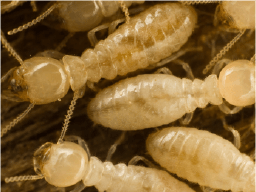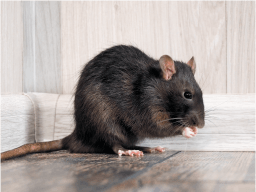Bed Bug Behavior
How do you know if you have bed bugs? Just the thought of bed bugs in your home and in your most vulnerable spaces can be enough to cause some sleepless nights. Pest Control Experts can help put your mind at ease by helping you understand bed bug behavior and how that can help you identify bed bug issues.
Schedule Today!
What Do I Need To Know About Bed Bugs?
Bed bugs are small, wingless insects that live off the blood of humans and other warm blooded mammals. They are reddish-brown in color and are about the size of an apple seed or the head of Lincoln on a penny. Their sole food source is blood from humans or other warm-blooded animals. Though you can see them with your naked eye, they are dorsoventrally flattened, meaning they are flat on both the top of their body as well as below, which allows bed bugs to hide in very small cracks in your floor, carpet, bed frame, mattress and upholstered furniture.
Bed Bug Behavior
The thing about bed bugs is that their behavior is pretty straightforward: find a host and feed frequently and mate when possible. Bed bugs don’t pollinate flowers. They don’t do the crucial job of decomposing decaying material to create fresh new topsoil so that other organic matter may grow. They don’t provide the primary food source for any predators. And while certain insect species like the cockroach, certain ants and centipedes might eat them on occasion, no large part of the ecosystem would be irreparably damaged if they were wiped out completely.
Bed bugs do nothing except eat, hide and mate.
Feeding
Bed bugs feed on the blood of warm blooded mammals, of which humans are a part. Their mouth is specially designed to perfectly pierce the skin of mammals and cut a path through tissue to reach an appropriately sized capillary (small blood vessel) from which to feed. Components of the bed bug’s saliva act as an anesthetic while also doing double duty to promote increased blood flow at the blood site. This makes the whole process nearly painless.
Bed bugs feed while humans and other host animals are sleeping because it takes anywhere between 5 and 10 minutes for a bed bug to eat its fill of blood. All told, between finding a host, biting a host and feeding, a bed bug may spend less than 20 minutes in physical contact with a person or animal. Once fed, a bed bug will either wait until it has completed a moult and moves on to the next transitional phase of its maturation process. An adult bed bug will wait until it has fully digested its meal before trying to feed again. Either of these processes can take several days.
Hiding
It can take somewhere between 3 days and several weeks for a bed bug to fully digest a meal. Because the bed bug needs so much time to digest and mate, bed bugs spend most of their life hiding and are masters at this task. They will choose the best place with the least amount of disturbance. Their bodies are flat which helps them hide unseen in any crack or crevice around your home. It can take a trained pest control specialist who is highly knowledgeable about bed bugs and bed bug behavior to identify bed bugs in your home. This is why the first course of action if you think you may have bed bugs in your home is to call a pest control professional immediately.
What Should I Do If I Think I Have Bed Bugs?
If you suspect you might have a bed bug infestation the first thing to do is to call Pest Control Experts to set up an appointment so that one of our courteous professionals can figure out what may be causing your bug bites. Since identifying the right bug is paramount in pest control it is important to make sure you call the right pest control service.
Call Pest Control Experts today to get a free quote and to schedule your home pest inspection as soon as possible!
Call 855-891-5410















